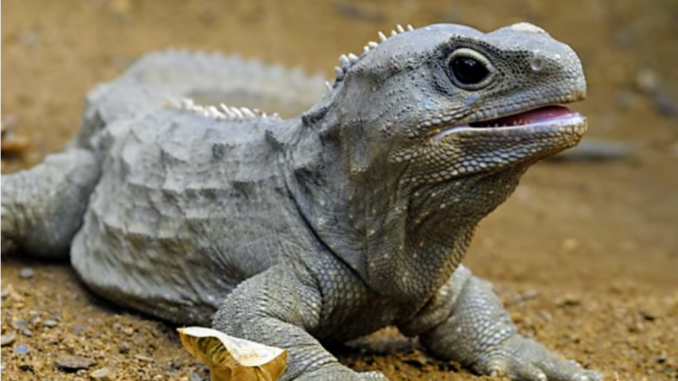
When is a lizard not a lizard? When it’s a tuatara, of course. The species Sphenodon punctatus has been around for more than 250 million years, making it older than the first dinosaurs! S. punctatus branched away from lizards, snakes, and other reptiles at that time. Although the order Rhynchocephalia (of which the genus Sphenodon is a part) included other species once upon a time, S. punctatus is the sole surviving representative of its branch on the tree of life.
Scientific Classification
Kingdom: Animalia
Phylum: Chordata
Class: Reptilia
Order: Rhynchocephalia
Family: Sphenodontidae
Genus: Sphenodon
Species: Sphenodon punctatus [Gray, 1842]
Tuataras grow very slowly. In fact, it takes about thirty-five years before they are completely grown, at which time they’ll measure 0.5-0.8 meters (20-31 inches) total length including tail, and weigh up to 1.3 kg (2.9 lb). In the wild, their average life span is sixty years, but really elderly specimens can potentially live to 100 years old or more. By the way, although these animals once heavily populated much of the Earth, today they can only be found on thirty-some small islands off the coasts of New Zealand.
Scientists recently finished mapping this fascinating creature’s genome – publishing it earlier this month – and it is enormous. The DNA evidence demonstrates that tuataras share genetic sequences with reptiles, birds, and mammals, including humans! Nearly twice the size of the human genome, it’s one of the largest genomes of any vertebrate, with numerous repeating elements that are more closely related to mammals than to lizards or birds. This is a very unique animal which can teach us a great deal about genetic divergences (branching) that occurred millions of years ago.
To recap, tuatara are reptiles from the deep past but are on a seperate branch distinct from all other reptiles including lizards, snakes, dinosaurs, et al. Oh, one last thing: did we mention tuataras have a third eye? No? Watch the video to see the eye in the back of its head.
“The Lonely 3-Eyed Reptile” (8:52):
Question Of The Night: Where, when, or how, do you fall asleep most readily?
